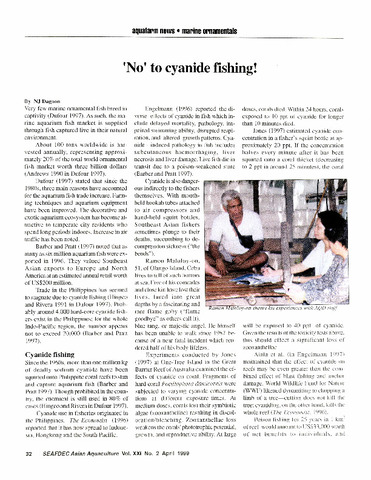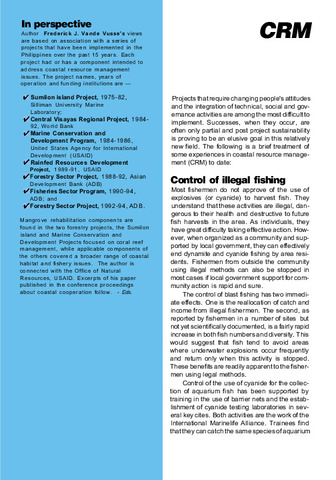A guide to the grading of fish and shellfish
Share
Abstract
This manual endeavours to guide fish wholesalers, retailers, processors, inspectors and technologists who are confronted with the need to use sensory tests to evaluate the quality of fish and shellfish under iced storage. It also aims to objectively reflect the sensory changes in fish and shellfish with the chemical, biochemical and microbiological indices. The manual has been made user friendly by organising the data as simply as possible and by providing many coloured plates of fish and shellfish at different stages of spoilage to serve as a basis for comparison.
Suggested Citation
Sophonphong, K., Low, L. K., & Lim, P. Y. (1998). A guide to the grading of fish and shellfish. Singapore: Marine Fisheries Research Department, Southeast Asian Fisheries Development Center.
Subject
fish grading  ; quality control
; quality control  ; organoleptic properties
; organoleptic properties  ; fish
; fish  ; shellfish
; shellfish  ; Threadfins; Eleutheronema tetradactylum; Snappers; Lutjanus altifrontalis; Sea bass; Lates calcarifer; Tuna; Euthynnus affinis; Thunnus tonggol; Prawns and shrimps; Penaeus monodon; Penaeus merguiensis; Metapenaeopsis barbata; Cuttlefish; Sepistenthis lessoniana
; Threadfins; Eleutheronema tetradactylum; Snappers; Lutjanus altifrontalis; Sea bass; Lates calcarifer; Tuna; Euthynnus affinis; Thunnus tonggol; Prawns and shrimps; Penaeus monodon; Penaeus merguiensis; Metapenaeopsis barbata; Cuttlefish; Sepistenthis lessoniana
 ; quality control
; quality control  ; organoleptic properties
; organoleptic properties  ; fish
; fish  ; shellfish
; shellfish  ; Threadfins; Eleutheronema tetradactylum; Snappers; Lutjanus altifrontalis; Sea bass; Lates calcarifer; Tuna; Euthynnus affinis; Thunnus tonggol; Prawns and shrimps; Penaeus monodon; Penaeus merguiensis; Metapenaeopsis barbata; Cuttlefish; Sepistenthis lessoniana
; Threadfins; Eleutheronema tetradactylum; Snappers; Lutjanus altifrontalis; Sea bass; Lates calcarifer; Tuna; Euthynnus affinis; Thunnus tonggol; Prawns and shrimps; Penaeus monodon; Penaeus merguiensis; Metapenaeopsis barbata; Cuttlefish; Sepistenthis lessoniana
Collections
- Manuals [4]
Related items
Showing items related by title, author, creator and subject.
-
'No' to cyanide fishing!
Dagoon, N. J. (Aquaculture Department, Southeast Asian Fisheries Development Center, 1999) -
Prized commodity: Low value/trash fish from marine fisheries in the Asia-pacific region
Staples, Derek; Funge-Smith, Simon (Secretariat, Southeast Asian Fisheries Development Center, 2005)The use of the terms 'low value' and 'trash fish' varies across the Asia-Pacific region and can also change both seasonally and with location. This article defines low value/trash fish as 'Fish that have a low commercial ... -
CRM in the Philippines: Lessons learned
Southeast Asian Fisheries Development Center, Aquaculture Department (Aquaculture Department, Southeast Asian Fisheries Development Center, 1996)Philippine coastal communities can become capable fishery resource managers and that their management practices can become largely self-sustaining if the project approach focuses on assisting fishermen to learn how to help ...




